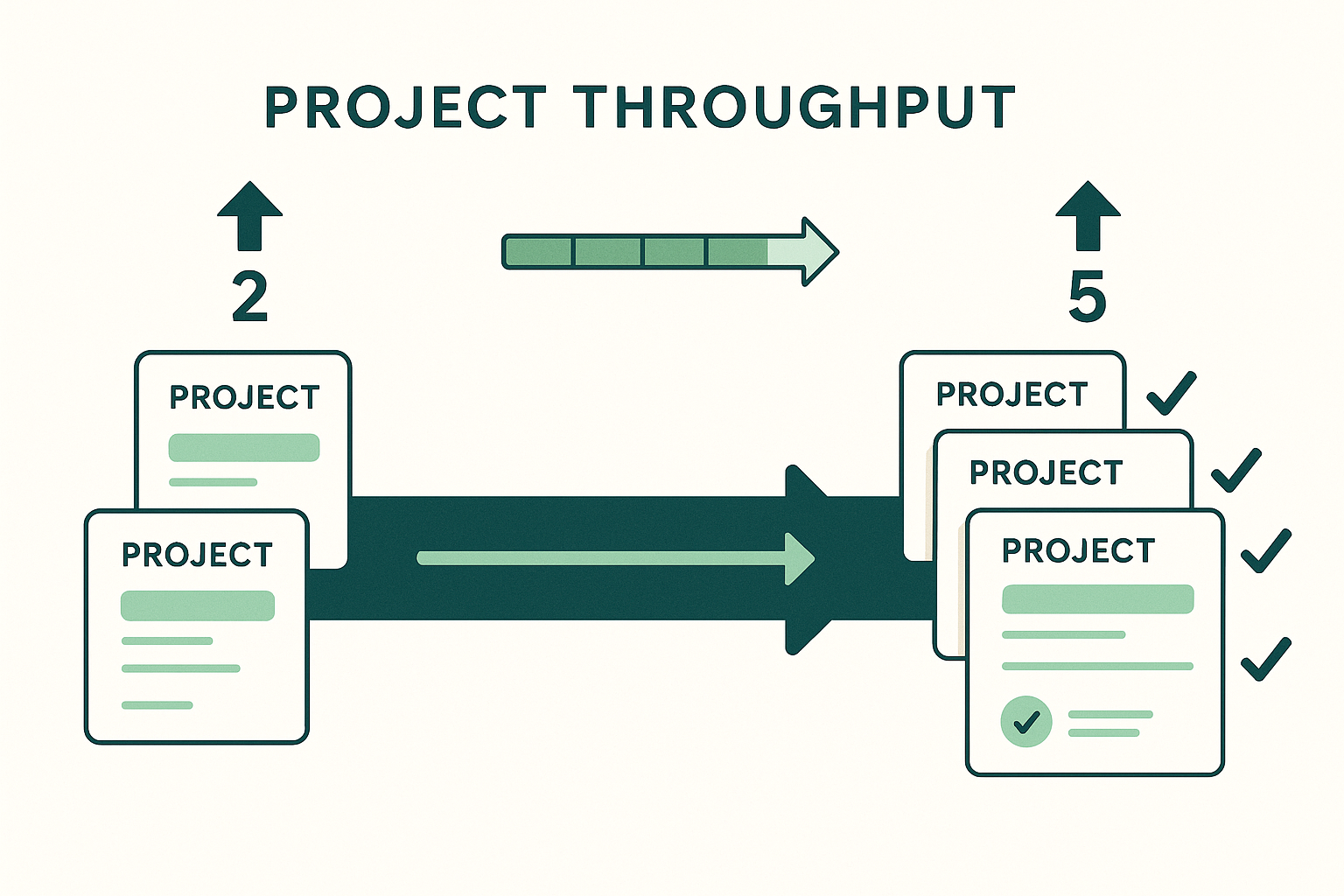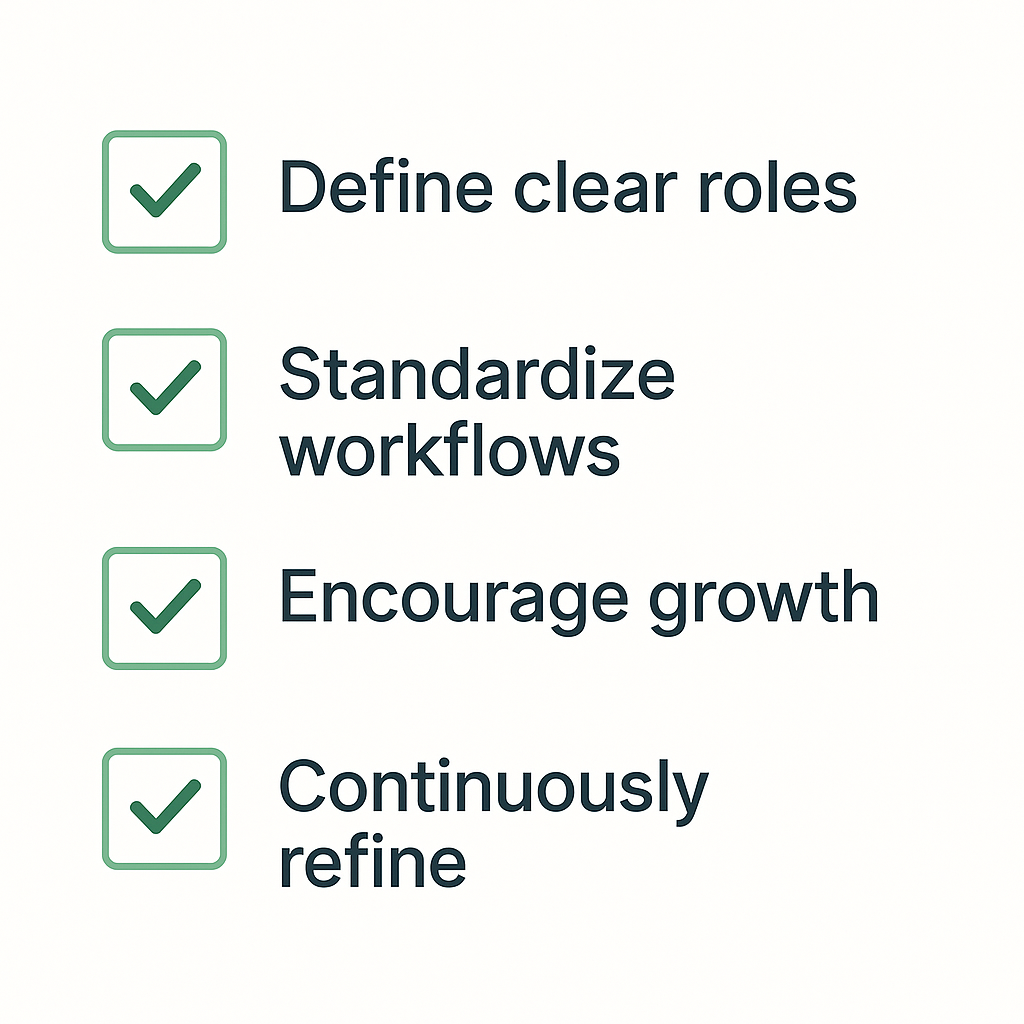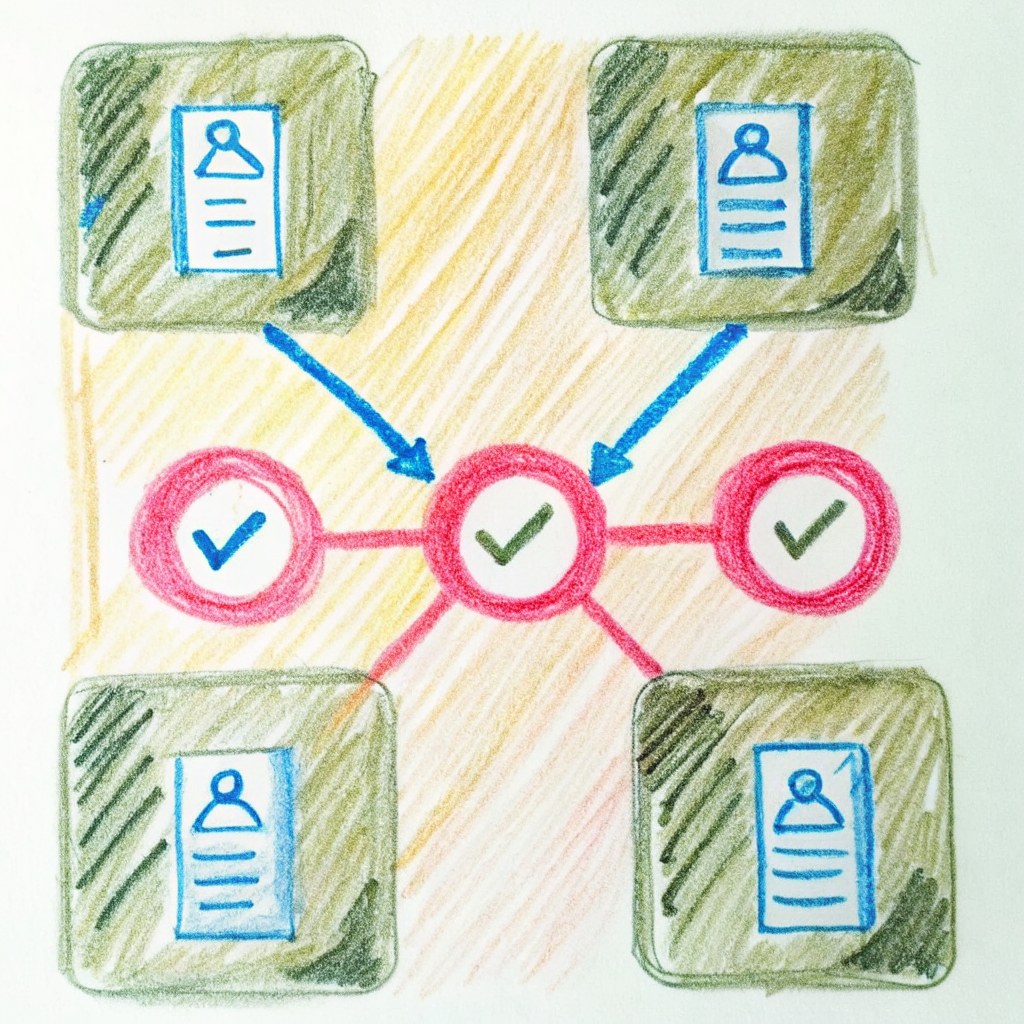How to Increase Project Throughput by 300% with a Scalable Project Lead Framework
Author

Date Published
Share this post
Introduction: Why Scaling Isn’t Just About Headcount
Hiring more developers doesn’t guarantee faster delivery - in fact, it often creates new bottlenecks. As teams expand, technical leads can quickly become overloaded, and projects stall without clear ownership.
At Fullscript, our Business Systems Engineering (BSE) team faced this exact challenge. I was responsible for multiple projects spanning several departments, but we capped out at two concurrent initiatives before coordination complexity slowed us down. To break through this ceiling, we introduced a Project Lead framework - a scalable approach that empowers developers to own initiatives, develop leadership skills, and accelerate delivery.
The result? A 300% increase in project throughput, scaling from two to five (and sometimes six) projects in flight simultaneously - all while maintaining quality, visibility, and cross-team alignment.
The Challenge: Scaling Project Throughput Without Overloading Teams

As our team grew, so did the complexity. We encountered:
- Decision-making bottlenecks - Technical leads are spread too thin without structured delegation.
- Limited leadership opportunities - Developers lacked a clear path to step up and own initiatives.
- Inconsistent project execution - Without a standard process, delivery varied across teams.
- Capacity constraints - Our ceiling was two major projects at a time, regardless of team effort.
We needed a repeatable, structured way to scale project throughput without burning out technical leads.
The Project Lead Framework: A Dynamic & Scalable Model
1. Key Responsibilities of a Project Lead
Project Leads distribute ownership across the team while building leadership capacity. Each Lead is accountable for:
- Project Planning - Define scope, roadmap, objectives, and success criteria.
- Team Coordination - Align stakeholders, assign responsibilities, and track milestones.
- Communication - Act as the single point of contact for updates and alignment.
- Risk & Issue Management - Identify blockers early and drive solutions.
- Quality Oversight - Ensure deliverables meet expectations and best practices.
- Process Adherence - Keep projects aligned to a structured execution model.
2. Structuring the Project Lifecycle
To ensure consistency, we align every project with our Software Development Lifecycle (SDLC):
- Initiation - Define problem statement, objectives, and stakeholders.
- Discovery & Planning - Establish requirements, dependencies, and success metrics.
- Execution & Delivery - Drive implementation, testing, and milestone tracking.
- Post-Launch & Iteration - Monitor performance and refine as needed.
This structure creates predictability, reduces ambiguity, and accelerates throughput.
The Results: Measurable Impact Across Teams
Adopting the Project Lead framework has transformed how we operate:
- 300% increase in supported projects - From two to five (sometimes six) concurrent initiatives.
- Leadership development - Developers gain hands-on ownership experience.
- Stakeholder alignment - Clear ownership and consistent communication reduce confusion.
- Faster, more predictable execution - Standardized processes streamline delivery.
And perhaps most importantly, the model has been well received by the team itself:
“Taking on a Project Lead role gave me hands-on leadership experience while still being close to the technical work.” - Senior Developer, BSE
Cross-functionally, stakeholders in Operations and Product have praised the improved visibility and predictability in project delivery, strengthening trust between engineering and the business.
How Any Team Can Implement This Project Lead Framework

The beauty of this model is its adaptability. Here’s how to start:
- Define clear roles - Establish expectations for Project Leads, and set success criteria.
- Standardize workflows - Align initiatives with your SDLC or equivalent structured process.
- Encourage growth - Provide mentorship, feedback, and support for new Leads.
- Continuously refine - Gather input and evolve the framework as your team scales.
Whether you’re a small startup or a large enterprise, this scalable project management framework works anywhere clear ownership and leadership development are needed.
FAQ: Scaling Project Throughput with Project Leads
Q: What is a Project Lead framework?
A Project Lead framework is a structured way to delegate ownership of initiatives to developers, giving them leadership responsibilities while ensuring consistent project delivery.
Q: How does this framework improve project throughput?
By distributing leadership, it reduces bottlenecks, creates predictable workflows, and allows teams to run multiple initiatives simultaneously without overloading technical leads.
Q: Can small teams use this model?
Yes. Even with just a few developers, assigning clear ownership and following a structured lifecycle can significantly improve execution speed and accountability.
Conclusion & Call to Action
Scaling engineering teams isn’t just about headcount - it’s about building leadership capacity at every level. Our Project Lead framework has unlocked a 300% increase in project throughput while growing the next generation of leaders.
If your team is struggling to balance execution speed with leadership growth, this model can help.
👉 Want to implement a scalable Project Lead framework in your team? Let’s chat!
Share this post
Related Posts

Developing a Modern Search Stack: NER & More Precise Search Results
How we developed an NER service to label user queries, dynamically generate our Elasticsearch query, and return more precise search results.

Developing a Modern Search Stack: Learning-to-Rank with Metarank
How we used Metarank to quickly build a learning to rank service to improve the NDCG of our search engine.